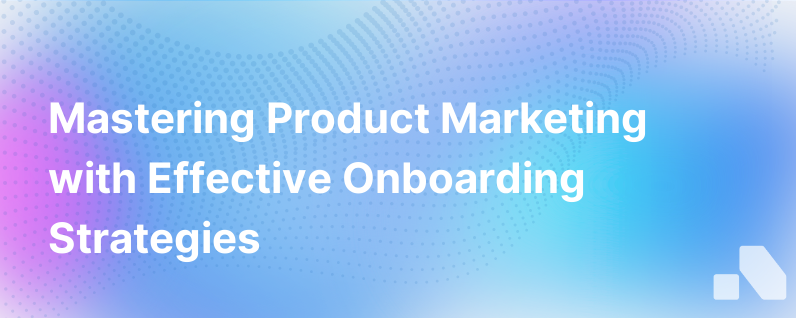
The path to becoming a successful Product Marketer often begins with the often overlooked but crucial process of onboarding. Over the years, we have seen many businesses report increased productivity, shorter ramp-up time, and improved employee retention, all due to effective onboarding practices.
This guide will give you a robust framework for onboarding product marketing professionals. It covers what product marketing onboarding should accomplish, how to structure onboarding for maximum impact, and tips for ongoing support.
Product Marketing Onboarding Overview
To understand onboarding from a product marketing perspective, we must first grasp what product marketing entails. Product marketing lies at the intersection of product, market, and customer. It's about understanding market needs, how your product meets these needs, and communicating these benefits effectively.
So, onboarding new product marketers involves equipping them with comprehensive knowledge about your products, market landscape, buyer personas, and the company’s broader goals and values.
Knowing this, let's delve into the core building blocks of an effective product marketing onboarding program.
Building the Onboarding Plan
The structure of onboarding should be tailored to your company's specific needs and challenges. However, most successful onboarding program follows a generalized structure that encompasses three essential phases:
Phase 1 - Company and Culture Orientation
A new hire's first impression of your company should inspire them to be a part of it and work towards its goals. This phase includes:
- Company Overview: Share business history, vision, mission, and current market position.
- Culture Introduction: Give them a taste of the company culture and value system.
- Team Introduction: Arrange meetings with colleagues and key stakeholders.
- HR and Admin Walkthrough: Don't forget the basics - office norms, policies, useful contacts, and tools they’ll be using.
Phase 2 - Role-specific Training
The focus now shifts to the specifics of their role as product marketers:
- Product Knowledge: Extensive product training is essential. They should know your products inside out.
- Competitor Landscape: A run-through of the competitive context in which you operate.
- Buyer Personas: Teach them about who they’re marketing to: your buyer personas.
- Market Insights: Provide comprehensive knowledge about the market conditions and trends.
- Sales Alignment: Since product marketing works closely with sales, educate them about your sales process, pitch, and product selling points.
Phase 3 - Hands-on Learning
This phase transitions them to their actual job responsibilities:
- Shadowing: Assign a mentor or a 'buddy' for them to shadow in action.
- Project Assignments: Give them a small project and guide them on project execution.
- Objectives and Key Results: Align them to their KRs and wider business goals.
- Feedback and Review: Regular check-ins and constructive feedback are crucial to chart their progress.
Actionable Tips for Successful Onboarding
While structuring onboarding, here are some actionable tips to elevate the process:
- Personalize: Tailor the onboarding experience to the new hire's experience, role, and department.
- Prioritize: Focus on essentials first; don’t overwhelm them right away.
- Pace: Stretch the onboarding over weeks, not days, giving them time to absorb the information.
- Provide Resources: Arm them with onboarding kits, guides, internal wiki, tools, etc.
- Check-ins: Regular check-ins by managers, HR, and mentor help them feel supported.
- Feedback: Encourage open lines of communication for their input about the process.
Beyond Onboarding: Continuous Learning and Development
Onboarding is not a one-and-done deal. To continually groom effective product marketers, a culture of continuous learning, frequent knowledge sharing sessions, and opportunities for skill development are invaluable. Use tools like Aomni to keep your product marketers updated with real-time market insights and research.
Conclusion
Onboarding done right sets the foundation of a stellar product marketing team. It positively impacts employee engagement, productivity, and overall contribution to your organization's growth. From imparting brand values to fostering a culture of continuous learning and feedback, a well-planned Product Marketing Onboarding is a game-changer.
While the onboarding process may seem extensive, remember, it's an investment that will reap dividends with a proficient, well-prepared Product Marketer, ready to take your products to new heights. As Benjamin Franklin rightfully said, "An investment in knowledge pays the best interest." And onboarding is an investment in your team's knowledge and future success.